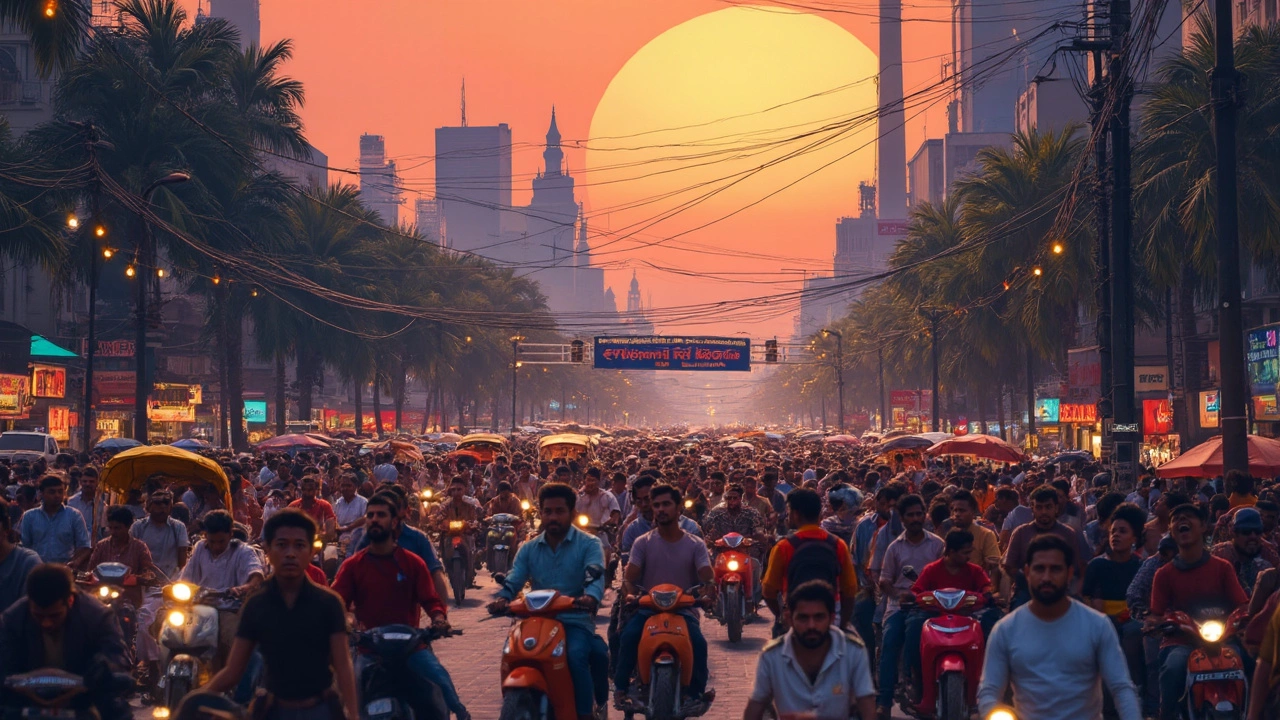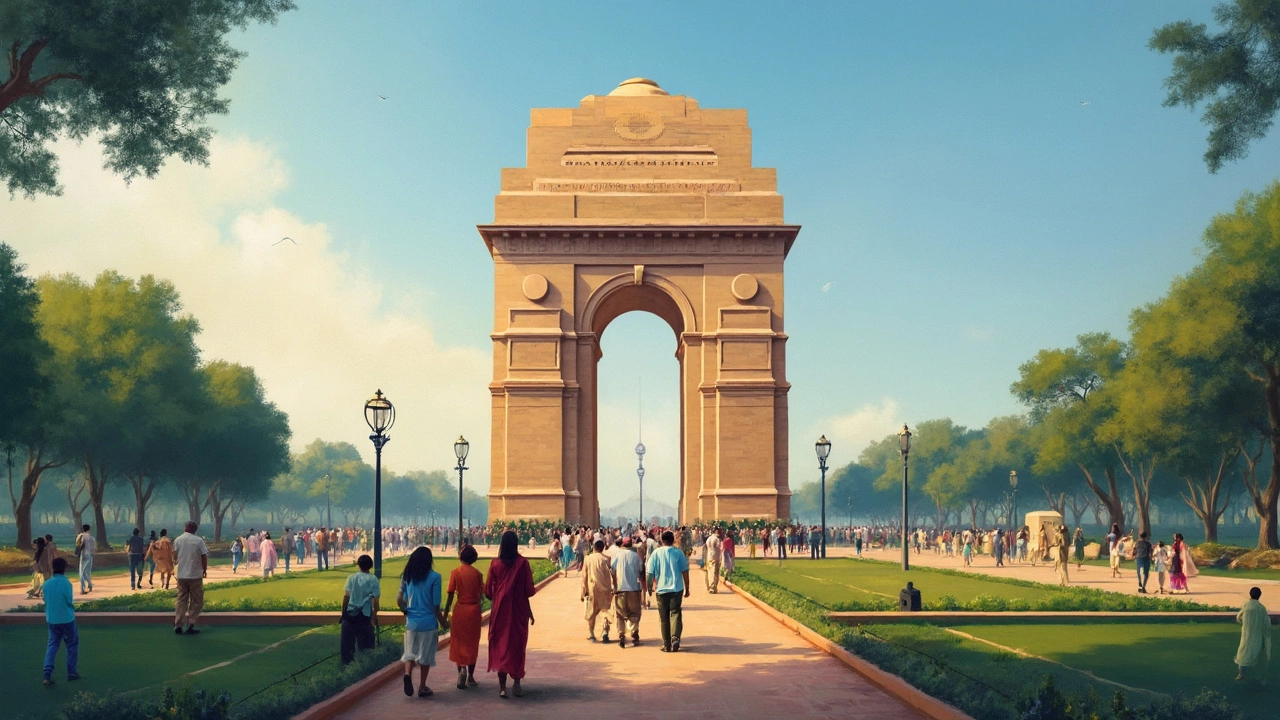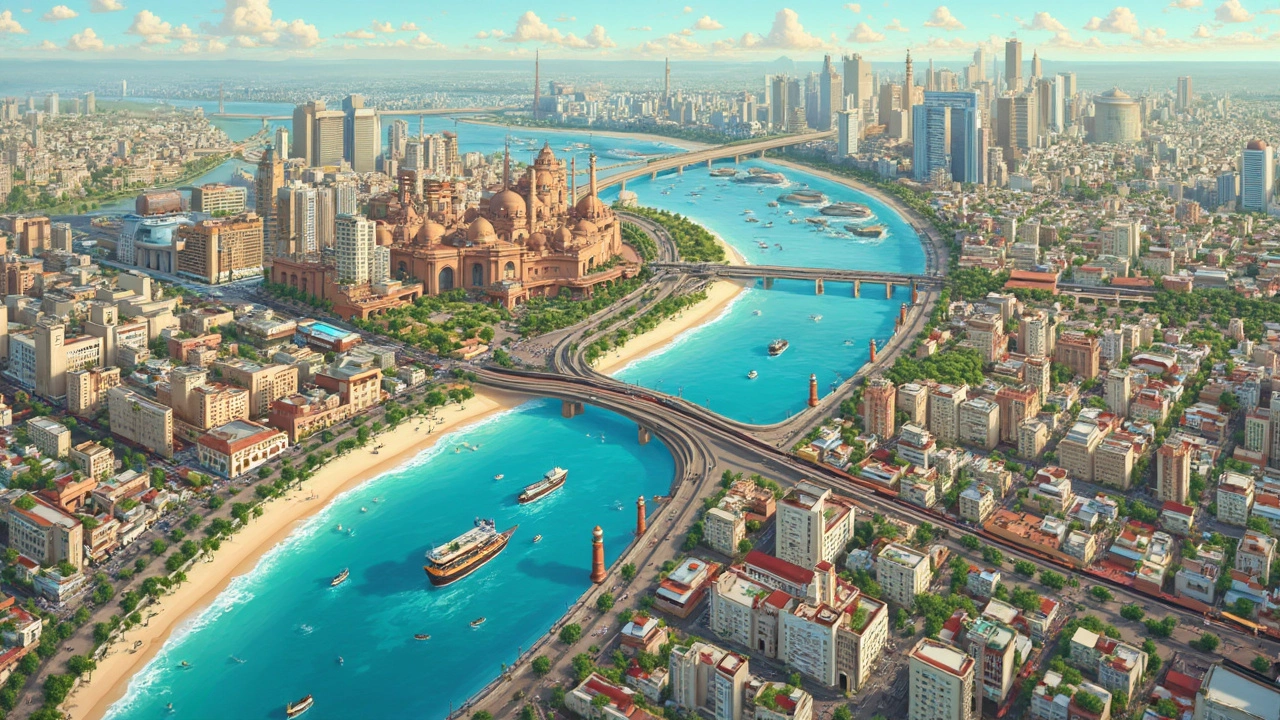Is Mumbai or Delhi Safer?
 Apr, 4 2025
Apr, 4 2025
Deciding whether to visit Mumbai or Delhi might have you scratching your head, especially when safety is a big concern. Both cities are vibrant and bustling, offering an experience like no other. But is one safer than the other? If safety plays a key role in your travel plans, then you're probably keen to know which city edges out in this department.
First things first, let's talk about safety numbers. You know, those stats that can often give a clearer picture. Mumbai often appears to be slightly safer according to official crime reports which, although not the whole story, give some insight into the general safety environment. Did you know that Mumbai has a lower reported crime rate compared to Delhi? However, city life can’t be summarized entirely by statistics.
Beyond the numbers, understanding the local lifestyle and culture in both cities can provide important cues on how to navigate them wisely. Whether you're exploring the historic charm of Delhi or the film capital buzz of Mumbai, knowing when and where to roam can make all the difference.
- Understanding Safety Statistics
- Local Lifestyle and Culture Impact
- Navigating Transportation Safely
- Neighborhood Watch: Areas to Be Alert
- Smart Travel Tips for Staying Safe
Understanding Safety Statistics
When trying to gauge whether Mumbai or Delhi is safer, it's a good idea to look at some actual numbers. While statistics don't tell the whole story, they're a useful tool for getting a handle on things. Here's what the data generally shows about crime in these two megacities.
Based on the latest reports, Mumbai often records fewer violent crimes per capita compared to Delhi. This doesn't mean Mumbai is free of risks, but it suggests a different type of urban challenge. For instance, Mumbai's crime rates related to theft and small-scale property crimes tend to be higher in busy areas. Travelers should keep an eye on their belongings, especially in crowded city spots.
On the flip side, Delhi seems to grapple more with cases of burglary and more severe incidents in certain districts. However, recent government initiatives are ramping up security measures, particularly in tourist-heavy areas, so there's been improvement.
Here's a quick glance at some facts:
- Both cities have a robust police presence, with more officers regularly patrolling popular spots to increase visitor confidence.
- Technology like CCTV cameras has been more widely implemented across both cities, helping in crime prevention and quick response.
Recognizing these factors can help ease your travel worries, but it's always wise to stay informed from up-to-date sources, like local news outlets or travel advisory sites, especially if you're planning a visit soon.
Local Lifestyle and Culture Impact
When exploring the bustling streets of Mumbai and Delhi, understanding the local vibe can seriously influence your experience. Mumbai, known as the city that never sleeps, is vibrant with its film industry, beaches, and bustling markets. It's generally considered a bit more cosmopolitan. That might mean you're less likely to stand out as a tourist but don't let that lull you into carelessness.
People in Mumbai generally go about their business with a 'spirit of Mumbai,' which means bouncing back quickly from any disruptions. It's more common to see locals chilling at Marine Drive late into the night. This late-night activity contributes to a sense of safety in certain areas.
On the flip side, Delhi, the nation’s capital, is rich in history and politics. It tends to be more traditional, with a lifestyle that might need you to be more aware of certain cultural norms. For example, when wandering around Old Delhi or attending a local festival, understanding customs like dress codes and religious practices can be crucial for respectful and secure interactions.
Let's have a quick look at some lifestyle aspects of both cities:
| Aspect | Mumbai | Delhi |
|---|---|---|
| Typical Evening Activity | Relaxing at Marine Drive, enjoying street food | Grabbing a quick bite at Connaught Place, nightlife at Hauz Khas |
| Common Public Attitude | Informal, fast-paced | Traditional, bureaucratic |
| Cultural Landmark | Bollywood, Gateway of India | Red Fort, Qutub Minar |
In both cities, women might need to take extra precautions, especially after dark or in less crowded areas. Dress conservatively to blend in more easily, and always have a local emergency number handy.
In essence, one's experience is deeply intertwined with how you adapt to the local culture. It’s crucial to approach both north India tourism spots with an open mind and awareness of local practices, which can make your visit both enjoyable and safe.

Navigating Transportation Safely
Navigating through Mumbai and Delhi can feel like an adventure in itself. With their complex transportation systems, it's easy to feel overwhelmed. But don't sweat it! Understanding how to get around safely can save you a lot of hassle and keep your trip enjoyable.
One of the first things to keep in mind is that both cities have a variety of transportation options. From metros and buses to auto-rickshaws and taxis, there's something for everyone. The Mumbai local train network is one of the busiest in the world, catering to millions daily. If you're traveling during peak hours, brace yourself for a crowd. It might sound chaotic, but it's a lifeline for the city—just remember to keep your belongings close and always be aware of your surroundings.
In contrast, Delhi boasts an extensive metro system that is relatively more organized and less crowded than Mumbai’s trains. The Delhi Metro is well-connected, covering key areas across the city, and it's generally seen as a safe mode of transport. Nevertheless, staying alert and avoiding empty compartments can add an extra layer of safety.
For short distances, auto-rickshaws and taxis are a convenient choice, but remember to agree on a fare before hopping in, especially if you're in Mumbai. Apps like Ola and Uber are popular in both cities, providing a reliable alternative that often comes with the comfort of knowing your route is tracked.
Here are a few tips to keep in mind when choosing how to get around:
- Avoid traveling alone at night, especially in less busy areas. Public transport tends to be safer during daytime or in well-populated regions.
- Use navigation apps to ensure your driver is taking the right route. This applies equally to both taxi rides and auto-rickshaws.
- If using metro systems, try to travel in the first or last compartments where security personnel are usually present.
- Be aware of your belongings at all times. Pickpocketing can happen in crowded places, so keeping your valuables secured is a good strategy.
Check out this quick comparison of some transit features:
| City | Public Transit Safety Rating | Common Taxi/App Usage |
|---|---|---|
| Mumbai | Moderate | High |
| Delhi | High | High |
Both Mumbai and Delhi have their quirks when it comes to transportation, but they also offer a rewarding experience if you approach it with the right mindset. Keep these tips in mind, and you'll find yourself moving around like a pro in no time!
Neighborhood Watch: Areas to Be Alert
When wandering through Mumbai and Delhi, there are definitely spots you'll want to keep your wits about you. Both cities have areas that are known for higher crime rates or bustling with crowds that can be overwhelming for newcomers.
In Mumbai, keep an eye out when you're in areas like Dharavi, which although fascinating due to its community spirit and small industries, can be tricky for first-time visitors. Another spot to be cautious is around the railway stations, like Churchgate and Dadar, especially during peak hours when they become a sea of commuters.
Moving north to Delhi, places like Paharganj, a popular spot for budget travelers, can get pretty hectic. The packed lanes can attract the occasional pickpocket, so keep your belongings close. Connaught Place is another hotspot. Although it's a prime commercial area, it's smart to stay aware of your surroundings, especially after dark.
While exploring, it's always wise to follow some common sense safety tips:
- Stick to well-lit areas, especially at night.
- Use trusted taxi services instead of hailing cabs from the street.
- Keep your valuables close and out of sight in crowded places.
- Rely on local recommendations from your hotel or host for the safest routes.
Having a heads-up on these neighborhoods can make your experience in both North India cities a lot smoother. Being informed means you can enjoy your travels while staying sharp about your safety.

Smart Travel Tips for Staying Safe
When visiting bustling places like Mumbai and Delhi, a little preparedness goes a long way in keeping safe. Let’s break down some practical steps that can make your journey smoother.
First off, staying informed about Mumbai safety and Delhi safety is crucial. Before heading out, check for any local news or alerts, as they can provide valuable insights into current happenings. Apps like SafetiPin and My Safetipass can offer real-time safety scores for different areas in these cities.
Getting around safely in these expansive cities relies heavily on choosing the right transportation. Opt for verified rideshare services like Uber or Ola rather than hailing a random cab. Public transport is generally okay, but it can get packed. Be cautious and keep your belongings close. Traveling during day hours is typically safer, but if you must move around at night, stick to well-lit, busy areas.
Exploring local culture is a must, but be mindful of your surroundings. Pickpockets can be a thing, especially in crowded areas like Connaught Place in Delhi or Colaba Causeway in Mumbai. Using a money belt or a neck pouch is a smart move to keep your valuables secure.
To give you an idea of which areas might require extra alertness, here's a quick look:
| City | Areas to Be Cautious |
|---|---|
| Mumbai | Kurla, Dharavi |
| Delhi | Old Delhi, Paharganj |
These areas have their charm but being a bit more vigilant can save you headaches.
Here are a few more handy tips:
- Blend in as much as you can. Wearing flashy jewelry or expensive gear can draw unwanted attention.
- Always keep emergency numbers on your phone: Mumbai Police (100), Delhi Police (100), and healthcare services like Apollo Hospitals.
- Carry a portable charger. Navigating the city drains your phone's battery fast, and you don't want to be stuck without it.
With these tips in your back pocket, you'll be exploring safely and confidently. Remember, staying aware and prepared is the best way to enjoy all that Mumbai and Delhi have to offer!